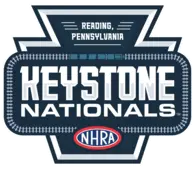

Everything you ever wanted to know about Sunoco Race Fuel — but were afraid to ask

ND] Is racing fuel more than just high-octane street gas?
Sunoco Race Fuels are 0% street gas. Our fuels are blended from highly refined components and pure chemicals to produce a fuel that is exactly the same year after year.
ND] What advantages does racing fuel offer a car and engine?
Race fuels can combust quickly and completely which prevents deposits and carbon from building up in the engine. Specially tailored properties like higher octane can allow an engine to use higher cylinder pressures and increase performance.
ND] How would a Sunoco race fuel compare to, say, a 93-octane street gas with a ton of octane booster?
Octane boosters sometimes make claims in octane points (0.1) or octane numbers (1). The effective octane boosters contain a chemical MMT that can raise octane significantly. Octane can be increased to the mid-100s. MMT used in high concentrations will foul spark plugs and leave an orange soot residue. At the end of the day, 99% of the fuel is still street gas so you will still have to contend with issues like short storage life and variation from fill ups.
ND] How many racing fuels are available from Sunoco: Gas? Methanol? Ethanol? Diesel?
Sunoco Race Fuels currently has 18 blends of gasoline but we also manufacture other race fuel brands. Trick racing gasoline and Turbo Blue racing gasoline each have 2 unique blends which increases the number to 22. These blends don’t include Sunoco products like Methanol, E98 and Nitromethane used for NHRA.
ND] Does a gallon of Sunoco race fuel weigh more than a gallon of street gas?
No, race fuels fall into a similar density range as street gas.
ND] Where is Sunoco Racing fuel available?
All over the world. For details on where to find a dealer we have a fuel finder on SunocoRaceFuels.com. In many cases race tracks, gas stations and engine builders sell our fuels.
ND] Where is Sunoco Racing fuel refined?
Marcus Hook, PA
ND] Does Sunoco racing fuel oxidize as quickly as street fuel when a car sits in storage?
No, our race fuels are extremely stable and can be stored for years without degradation. The stability comes from using highly refined ingredients as well as a healthy dose of antioxidant.
ND] What makes a car need race fuel?
A car needs race fuel when it requires a fuel with specific properties in order to reach its full potential. This could mean needing a higher octane to allow for power gains from tuning. This could also mean a stable fuel that won’t break down when stored in a classic car for years between use.
ND] Where should a person start when picking race fuel?
The engine builder is a great resource because they know all the specs on the engine. If you have more questions about your application give us a call at 1-800-RACE-GAS (1-800-7223427).
ND] How much fuel can a regular person carry in their race trailer without needing a special placard?
The limits vary widely for class 3 flammable liquids based on container size, required documentation and training. See link for DOT table. https://www.nrcs.usda.gov/Internet/FSE_DOCUMENTS/nrcs144p2_043004.pdf
ND] How long does Sunoco fuel last in an open drum?
Open to atmosphere containers are bad for storing fuel. Gasoline vapors can escape and quickly change the fuel properties. Make sure to tightly seal the fuel container after use. Fuel stored in a drum is stable for two years as long as the drum is resealed after fuel is removed.
ND] Can race gas or oxygenated fuel make more power on low-compression (8:1) engines?
Many race fuel are oxygenated. Oxygenated fuels allow the engine to have a higher power output because oxygen is brought into the engine from air and fuel. Ethanol for example has an oxygen atom trapped in the chemical structure. During combustion that oxygen is available to combine with fuel. This allows the engine to burn more fuel than if the only source of oxygen was air.
ND] How much does a barrel of nitromethane cost these days?
Prices vary due to many factors.
ND] How much compression can you have with a good amount of boost (say, 15 psi) on E85?
Many factors will determine compression or boost limits. Consult an E85 engine builder/tuner for recommendations on your specific engine setup.
ND] It seems like a lot of racers are running methanol, what are the advantages?
Methanol has many advantages over gasoline. Methanol is about 50% oxygen by weight which allows for a higher power output from the same displacement engine. Methanol also absorbs more heat when it evaporates so there is a cooling effect that benefits performance. Be wary that methanol is corrosive to some parts and the flame isn’t visible, added danger.
ND] What's the highest-octane race gas you sell?
Sunoco SR18 has (R+M)/2 octane of 118. The max scale for octane is 120, you should question the source if gasoline is advertised with higher than 120 octane.
ND] What's your most popular fuel?
Sunoco Standard 110 Octane, Purple.
ND] What's the heaviest and lightest fuel?
Sunoco E85-R is our heaviest fuel at 6.58lbs/gallon, Sunoco SR18 is our lightest fuel at 5.85lbs/gallon
The technical answers above were provided by Zachary Santner, Technical Specialist for Sunoco Race Fuels.




















































